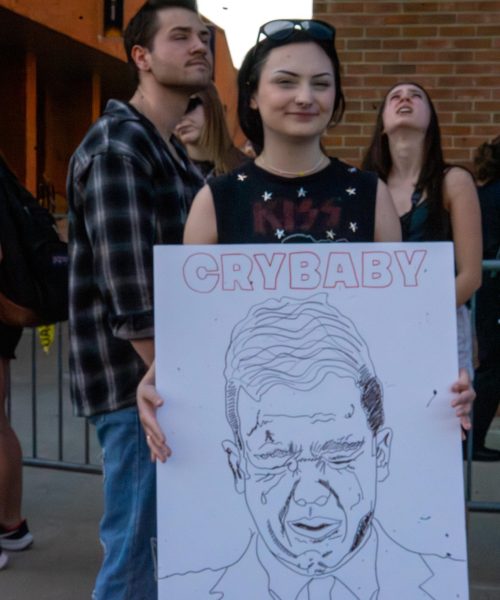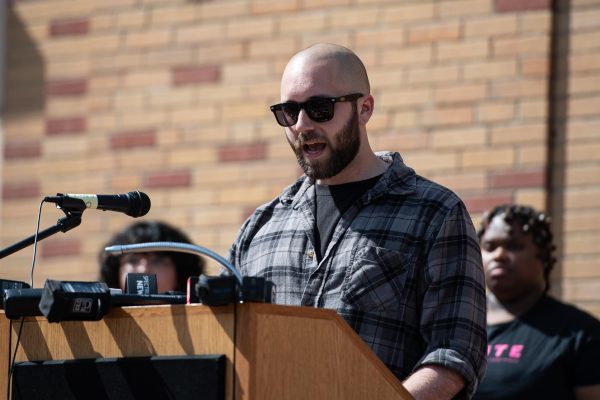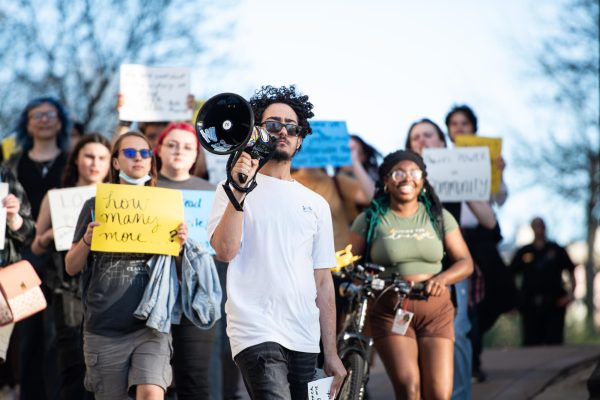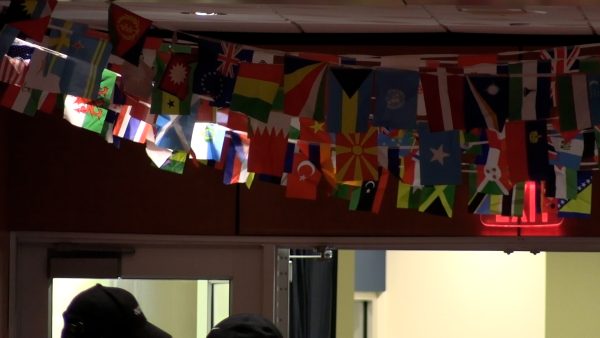Kent State professors honored for outstanding teaching
October 14, 2011
Something Gary Hanson, George Garrison and Susan Taft can all agree on: They really love what they do.
The Kent State Alumni Association named the three professors as recipients of the 44th Distinguished Teaching Award Tuesday with a surprise visit to each winner’s classroom.
Kent State’s most prestigious teaching award is presented annually to three full-time faculty members who “demonstrate extraordinary teaching in the classroom and a commitment to impacting the lives of students,” according to the Alumni Association.
Nancy Schiappa, associate director for outreach for the Alumni Association, said she received 562 applicants this year, which, to her knowledge, is the most in the history of the award.
The professors and other award finalists will be formally honored Oct. 28 at the University Teaching Council Conference President’s Luncheon in the ballroom of the Kent Student Center.
George Garrison- Pan-African Studies
George Garrison was lying in his bunk off the coast of Vietnam when he decided he wanted to go back to graduate school and become a teacher.
“I was thinking about what I was going to do later in my life, once I got out of the military,” Garrison said. “I began to think about the people who had the largest impact on me, and they were all teachers.”
Teaching was always the most honorable profession in the community Garrison grew up, he said, because it was seen as the bearer of knowledge and, thus, success.
“I can’t think of many (professions) that accomplish more good than preparing young people for the rest of their lives,” Garrison said.
After 16 years of teaching at Kent State, he said he received the DTA first with shock and then with a “mixed sense of great humility and great satisfaction.”
His strengths in teaching relate to the strengths of his subject. Pan-African Studies, he said, as one of the relatively new fields of study, is currently growing with new knowledge recently discovered and placed into the curriculum.
“Because we’re on cutting edge, there is still tremendous opportunity for energetic professors to go and be part of the discovery of this new knowledge,” Garrison said.
Garrison’s students benefit from the personal research he conducts when he’s not in the classroom.
“I spent a lot of time traveling, collecting data, information, consulting with people, visiting museums and archives and discovering new information that I revise my courses with from year to year,” he said.
Garrison said he spent a recent summer in the Grand Canyon, studying paths that Native Americans traveled to discover the travels of African people who were in the present-day Southwest before Europeans even discovered the continent. This is not knowledge, he said, that any of his students learned in high school.
“I tell my students, ‘you will learn this for the first time.’”
Gary Hanson- Journalism and Mass Communication
Gary Hanson wants his students to feel the same passion he has for journalism.
“It’s pretty easy at a big university for students to become a number,” Hanson said. “And I think one of the strengths of the journalism school is you don’t become that.”
Hanson said he will stay nights to work with his broadcast students and create time to meet with them outside of the classroom. That, he said, is what the students will ultimately remember.
“I’ve been a real fan of journalism; I just love this stuff,” Hanson said. “I think the passion is contagious. A really good teacher conveys that passion.”
He said he works with such an outstanding faculty in the School of Journalism and Mass Communication — three of whom have already won the DTA. He has learned from other faculty members and developed his own teaching style, which is a process unique to college professors, he said.
“No one teaches college teachers how to teach,” Hanson said. “So everyone has to develop what their own style is, and it’s nice (The Alumni Association) is recognizing that.”
His strengths as a professor include breaking down information into relatable bits and, second, spending the quality time it takes to build a relationship with individual students.
“It’s about being able to take the information and lay it out in a way that’s understandable,” he said. “But I also think it’s about having a clear understanding of what you want them to learn and conveying that.”
Hanson said the single most rewarding thing about teaching is the moment a student lights up.
“That’s what it’s all about,” Hanson said. “When a student finally understands something, and it clicks.”
He said his experience running a newsroom plays into his strengths as a professor.
“This is the perfect job for me,” he said. “This really fits my skill set.”
Susan Taft- Nursing
Susan Taft always knew she wanted to be a teacher, but it wasn’t until her she entered her doctorate program that others inspired her.
“I found out really early in my career I wanted to teach,” she said. “But it wasn’t until I was in my Ph.D. program that I knew. I’ve developed my ability to be a good teacher over many years through the example of other fabulous teachers,” Taft said.
Although Taft was a finalist for the award before, she said she was not remotely expecting a mob of people with balloons to interrupt her class and announce she had won.
“I was pretty much knocked off my feet when they walked into my classroom last night,” Taft said.
She said she teaches the disciplines of management and health policy, both of which she personally researches.
“I love my subject matter,” she said. “I read journals and stay on top of the latest information. It’s always live and growing for me. I’m constantly learning, and my students are learning, and we’re learning together, and that’s great.”
Taft said it’s important that her students are motivated by high expectations while also knowing what they are being graded on.
“I set high standards for my students, and I don’t relax those standards,” Taft said. “I let my standards and expectations be very well-known.”
Other DTA finalists
- Ann Abraham – Chemistry
- Rosemarie Bank – Theatre
- Cynthia Barb – Mathematical Science
- Brent Bruot – Biological Sciences
- Stephen Gagola – Mathematical Science
- Christopher Ransom – Visual Communication Design
- Vilma Seeberg – Foundation, Leadership and Administration
Accountability, she said, is the mechanism that helps the student excel in her classroom.
“They have to do their assignments and do a good job,” she said.
Taft said she also focuses on personal engagement, such as involved discussion and role-playing activities so her students aren’t nodding off.
“I never hold classes that are one-way communication,” she said. “If I ever lecture, it’s only for about 15 minutes.”
Teaching mostly graduate students, she said, allows her to build long-term relationships that span the student’s career as well as hers. She said she offers feedback on resumes, advice on potential career decisions and, most of all, friendship.
The friendship is key to making her job not seem like a job.
“I can’t believe I get paid to do what I’m doing,” she said.
Contact Daniel Moore at [email protected].
new TWTR.Widget({
version: 2,
type: ‘search’,
search: ‘#KWDTA’,
interval: 6000,
subject: ”,
width: 240,
height: 300,
theme: {
shell: {
background: ‘#b8b8b8’,
color: ‘#66a9c5’
},
tweets: {
background: ‘#b8b8b8’,
color: ‘#444444’,
links: ‘#1985b5’
}
},
features: {
scrollbar: true,
loop: true,
live: true,
hashtags: true,
timestamp: true,
avatars: true,
toptweets: true,
behavior: ‘default’
}
}).render().start();























